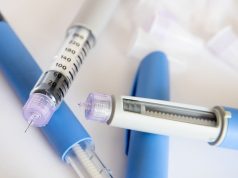Regimens can be tailored to clinical circumstances, and medical follow-up should also be tailored
By Elana Gotkine HealthDay Reporter
FRIDAY, May 9, 2025 (HealthDay News) — Updated recommendations for antiretroviral nonoccupational postexposure prophylaxis (nPEP) for HIV have been published in the May 8 issue of the U.S. Centers for Disease Control and Prevention Morbidity and Mortality Weekly Report.
Mary R. Tanner, M.D., from the CDC in Atlanta, and colleagues updated the 2016 nPEP guidelines and considerations for use in the United States, including considerations for testing and nPEP regimens for persons exposed who have received long-acting injectable antiretroviral agents in the past.
The authors note that for most adults and adolescents, the preferred regimens are bictegravir/emtricitabine/tenofovir alafenamide or dolutegravir plus (tenofovir alafenamide or tenofovir disoproxil fumarate) plus (emtricitabine or lamivudine). The regimens can be tailored to specific clinical circumstances. For persons prescribed nPEP, medical follow-up should also be tailored to the clinical situation; recommended follow-up includes a remote or in-person visit with a medical provider at 24 hours and clinical follow-up at four to six and 12 weeks after exposure for laboratory testing. Persons initiating nPEP should be informed that preexposure prophylaxis (PrEP) can reduce their risk for acquiring HIV in the case of repeat or continuing exposure after the nPEP course. PrEP options should be offered to those with ongoing indications, and an nPEP-to-PrEP transition plan should be created.
“Communication and education strategies are needed to increase both provider and community awareness of nPEP,” the authors write.
Copyright © 2025 HealthDay. All rights reserved.








